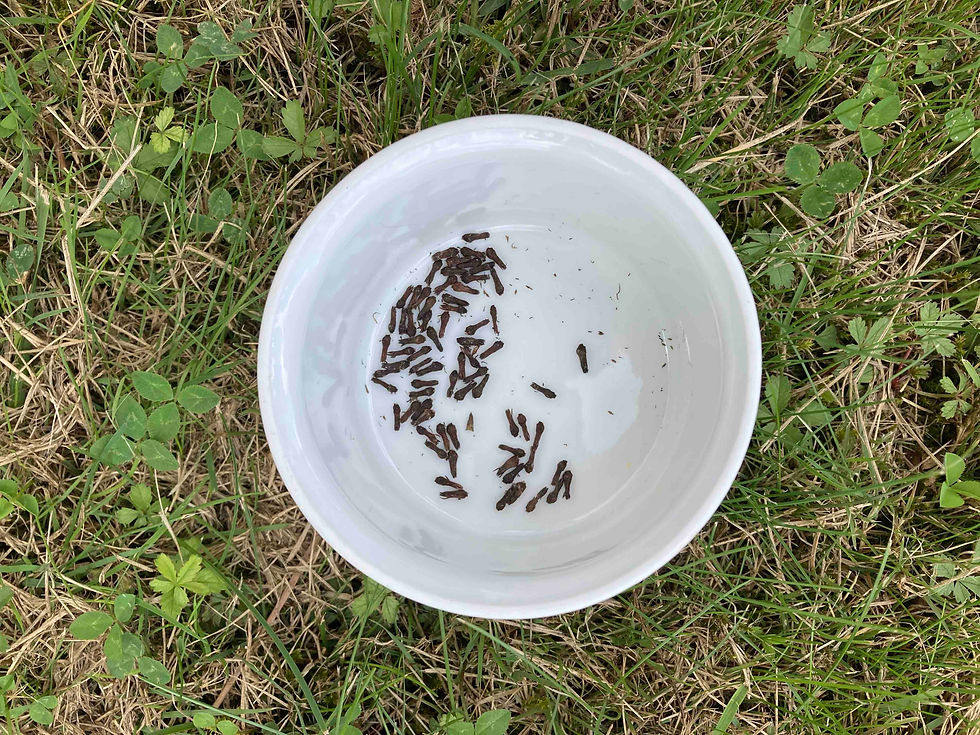All gone to seed
- Sue
- Aug 17, 2021
- 3 min read
Updated: Nov 7, 2021

Over the last 10 days I have been collecting the last of my summer seeds - and there is time to collect more. Sunny days, when seed heads are ripe but have not yet dispersed all of their contents, are ideal for collection. Sowing your own seeds does not always work, but it is worth a try and if successful it enables you to build up your plant collection cheaply, if not always quickly.

The method is straightforward - choose a dry sunny day, and plants which have ripe seeds. I shake the seed heads so that the contents drop into the palm of my hand and then I tip them into white ramekins so that I can see what I have got. Inevitably some seeds will fall onto the ground - but that is no bad thing. Sometimes I find that nature is better at germinating the seeds than I am and then it is is simply a process of transplanting the seedling sown by nature to a place chosen by me the following year.
This seed head is Echinacea pallida

Label your ramekins immediately! I think this is Echinacea pallida.

The take your seeds and, if you are sure you can identify the seed from the chaff then decant them into paper envelopes. Label and date them. Store them in a cool dry place - I use a sealed plastic container which I put in the fridge. If you are not sure which is seed and which is just plant detritus then try Googling pictures of the seeds. If you are lucky you may also find a You Tube video of someone separating out and storing seeds.
Seeds vary as to when and how they should be sown. Some require darkness, others light, some require a period of vernalisation (i.e. a period of cold conditions) before they will germinate. If I am not sure how a seed is to be treated I rely on two routes to success ( and usually use them both) - First, copy nature. She scatters seeds on the ground and leaves them there. However, nature tends to have a very low success rate (a plant can produce thousands of seeds but only produce half a dozen progeny). So I scatter seeds on clean, cultivated ground where I want them to grow next year but I also sow some in trays or pots. If I am not sure what to do with a particular seed I consult a good seed site ( such as seedaholic.com) or my propagation handbook (The Plant Propagator's Bible by Miranda Smith) which is so useful it has just been republished.

My one and only Echinacea giganteum - commonly known as Miss Wilmott's Ghost because legend has it that Ellen Willmott (a noted horticultualist) scattered them on suitable ground whenever she visited friends' houses - and the following year these ghostly white plants grew. I find it hard to believe it was that easy.
Success is varied - but don't give up. And sometimes you don't get what you expect - either because you have labelled something wrongly or because the seed is a cross between two similar varieties or species (c.f. Fennel and Dill - grow them too close together and the seeds can turn out to be what I call Fiddle, a cross between the two). My two great achievements this year have been one example of Eryngium giganteum, which I have been trying to grow for about four years and two small drifts of Echinacea pallida which I germinated two years ago. Last year they were still struggling as small plants, but this year they were great. Annoyingly, they have suddenly become very fashionable - and this summer they have haunted Instagram and are featured by almost every garden guru. I still love 'em though and have collected lots of seeds for next year.








Comments